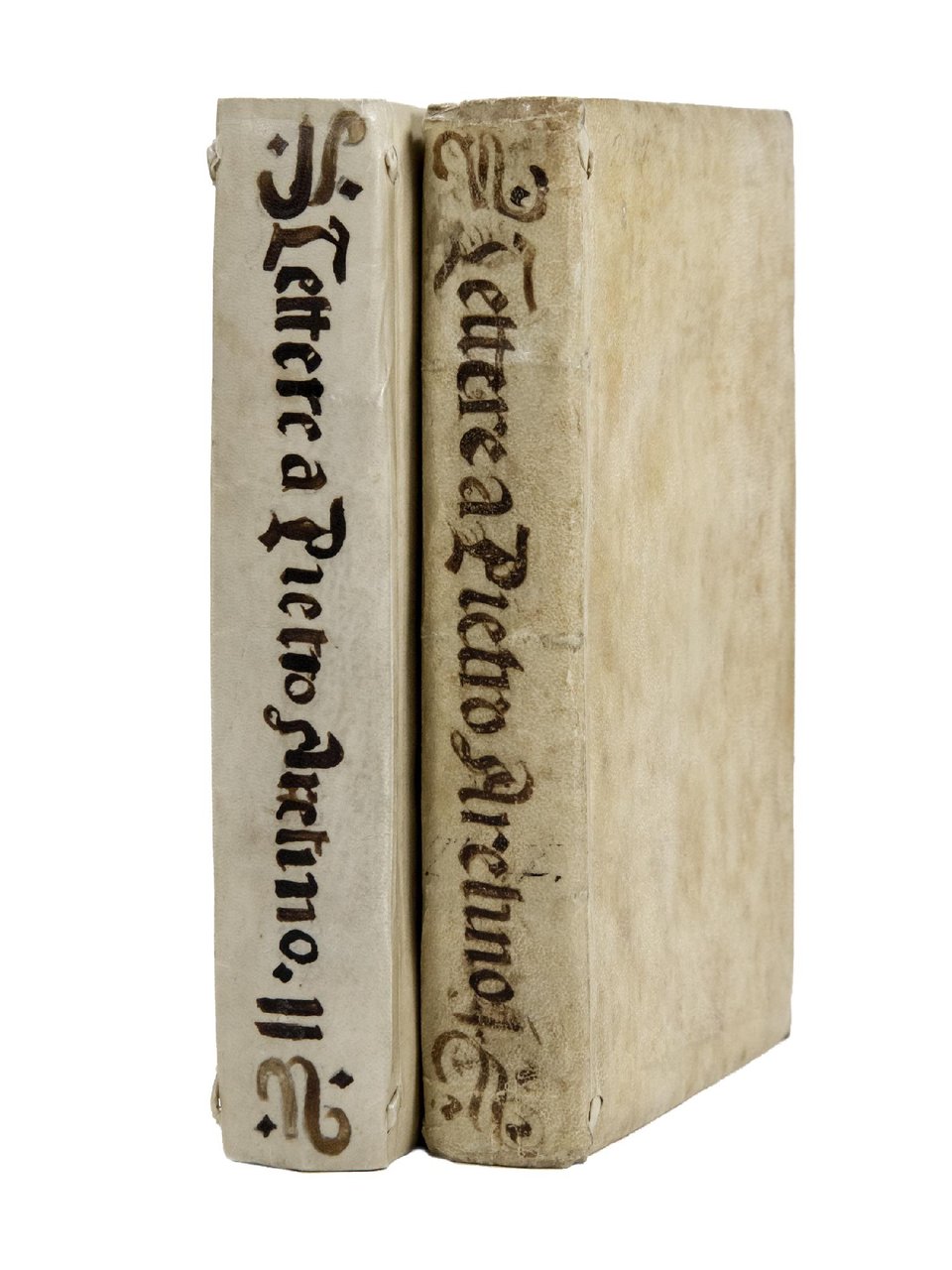
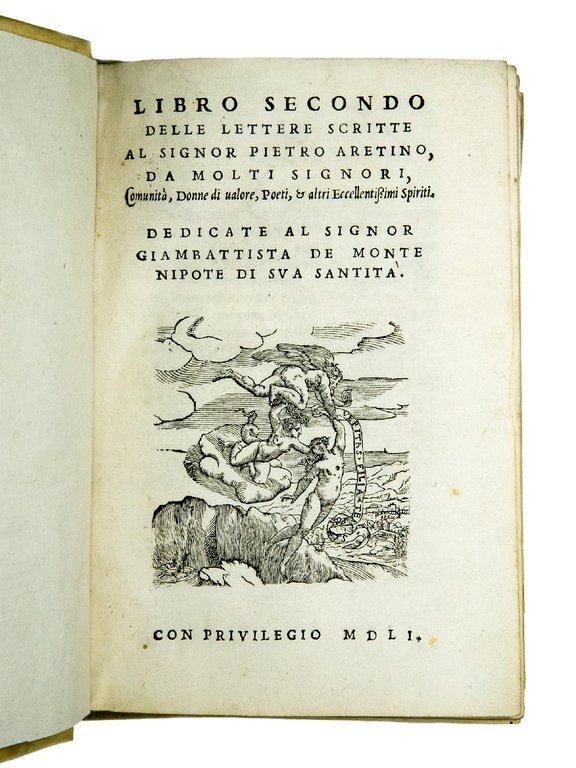
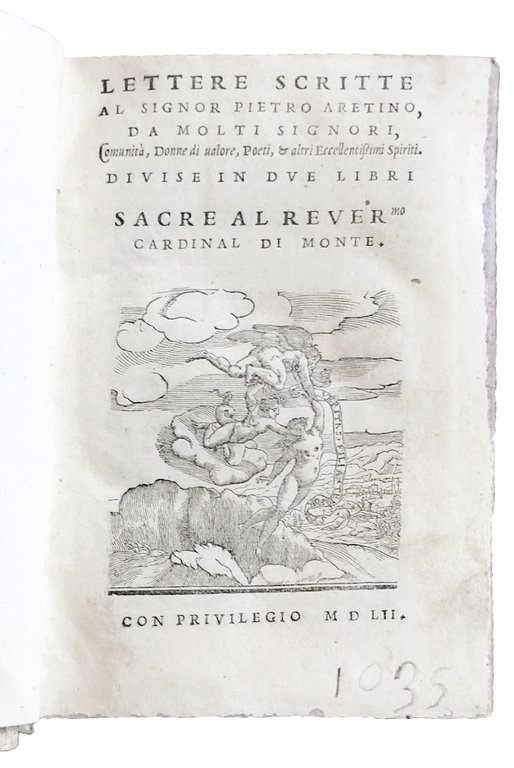
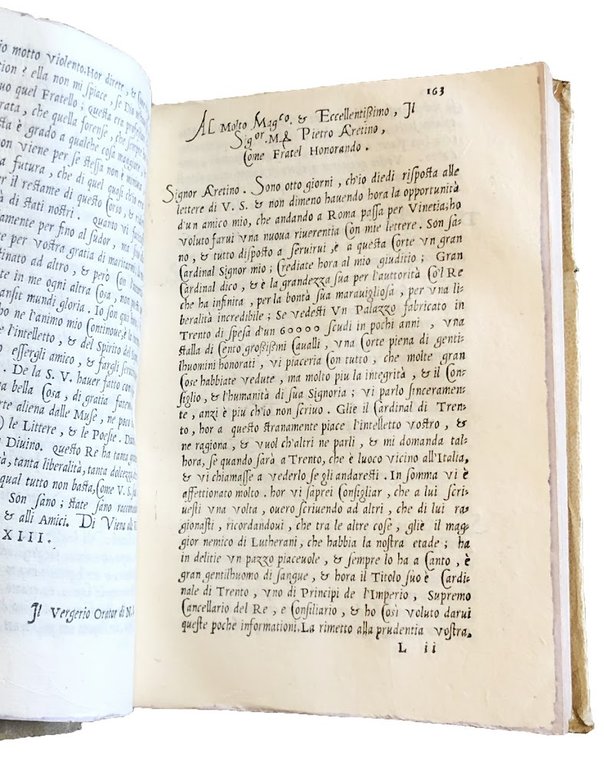
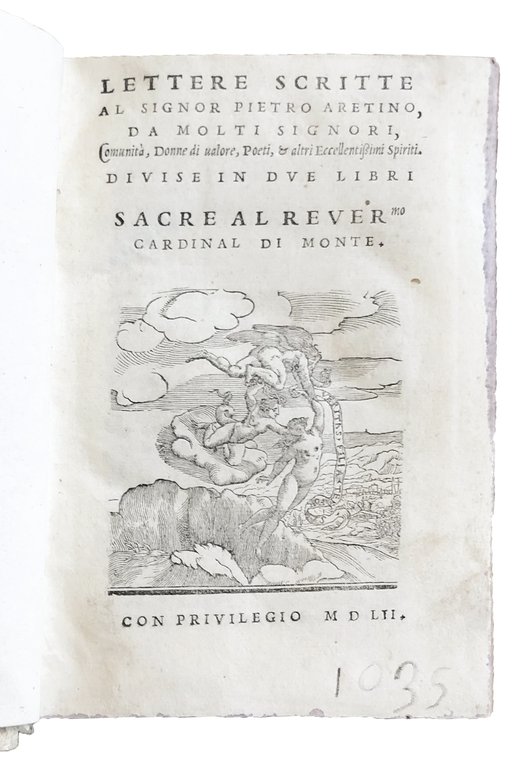

Libri antichi e moderni
ARETINO, Pietro, editor (1492-1556)
Lettere scritte al signor Pietro Aretino, da molti Signori, Comunità, Donne di valore, Poeti, & altri eccellentissimi Spiriti. Divise in due libri (and:) Libro secondo delle lettere scritte al signor Pietro Aretino
[Francesco Marcolini], 1552 [i.e. 1551]-1551
3200,00 €
Govi Libreria Antiquaria
(Modena, Italie)
Le corrette spese di spedizione vengono calcolate una volta inserito l’indirizzo di spedizione durante la creazione dell’ordine. A discrezione del Venditore sono disponibili una o più modalità di consegna: Standard, Express, Economy, Ritiro in negozio.
Condizioni di spedizione della Libreria:
Per prodotti con prezzo superiore a 300€ è possibile richiedere un piano rateale a Maremagnum. È possibile effettuare il pagamento con Carta del Docente, 18App, Pubblica Amministrazione.
I tempi di evasione sono stimati in base ai tempi di spedizione della libreria e di consegna da parte del vettore. In caso di fermo doganale, si potrebbero verificare dei ritardi nella consegna. Gli eventuali oneri doganali sono a carico del destinatario.
Clicca per maggiori informazioniMetodi di Pagamento
- PayPal
- Carta di Credito
- Bonifico Bancario
-
-
Scopri come utilizzare
il tuo bonus Carta del Docente -
Scopri come utilizzare
il tuo bonus 18App
Dettagli
Descrizione
Adams, A-1577; Basso, pp. 160-161; Edit 16, CNCE 28618 and CNCE 28621; Quondam, p. 280; S. Casali, Gli annali della tipografia veneziana di Francesco Marcolini, (Bologna, 1953), pp. 202-208 and pp. 217-219; P. O. Casi, Bibliografia di e su Pietro Aretino dal 1512 ai nostri giorni, (Milano, 2002), p. 105; P. Procaccioli, ed., Lettere scritte a Pietro Aretino, (Roma, 2003-2004), vol. I, pp. 379-381 and vol. II, pp. 393-395; S. Speroni, Lettere familiari, II Lettere a diversi, M.R. Loi & M. Pozzi, eds., (Alessandria, 1994), no. I, II and XIV.
FIRST AND ONLY EDITION of the first significant collection of letters addressed by numerous different senders to one recipient only. It was preceded one month earlier by the much smaller collection Lettere di diversi… all'Illustrissimo… Signor Vitello Vitelli (Firenze, 1551) with a dedication dated June 1551.
Even though Aretino's direct implication in the selection and correction of the material can not be proved, it is highly probable that he decided to publish part of his correspondence hoping to obtain an appointment as a cardinal's hat. Surely to give more reliability to the carefully planned operation of self-promotion, he likely preferred not to appear as editorial curator. The dedications of the two volumes are thus signed by the printer Francesco Marcolini. The first is addressed to Innocenzo del Monte, nephew of Pope Julius III, and is dated October 5, 1551. The dedication of the second volume to Giambattista del Monte (another nephew of the pope), dated October 8, 1551, was immediately replaced after the latter's death in April 1552 by a new one addressed to Lodovico Beccadelli, which in some copies is dated May 8, 1552, in others October 8, 1552.
As stated by Anton Francesco Doni in his Terremoto (Roma, 1556), written in 1538, when he had already broken with his ancient mentor Aretino, the latter entrusted his correspondence to Marcolini, who set it aside for many years. To justify the absence in the collection of many prestigious correspondents such as Emperor Charles V, the King of France, Francis I, or Pope Clemens VII, Marcolini reproaches Aretino in the first dedication for not having had more care in preserving their letters. Verisimilarly the omission had been done deliberately to avoid disclosing to the newly elected Pope Julius III that Aretino corresponded with people with whom (e.g. the emperor) he was having difficult relations. However, with the election of Julius III (February 7, 1550), Aretino had seen a real chance for him to become a cardinal and he promptly decided to take the opportunity to publish this collection, in which, he thought, every single correspondent should have been like a witness and a guarantor for his extraordinary qualities.
Aretino was already considered by his contemporaries the inventor of this kind of publication (cf. G. Baldassarri, L'invenzione dell'epistolario, in: “Pietro Aretino nel cinquecentenario della nascita, Atti del Convegno di Roma-Viterbo-Arezzo 28 settembre-1 ottobre 1992, Toronto 23-24 ottobre 1992, Los Angeles 27-29 ottobre 1992”, Roma, 1995, pp. 157-178). His fame had spread mainly throughout his correspondence, and it surely was a source of great pride for anybody to appear as his correspondent (cf. P. Procaccioli, op. cit., pp. 9-28).
“Solo un editore [Marcolini] immune da pregiudizi classicisti e formalistici poteva concepire e assemblare una raccolta come quella delle Lettere scritte a Pietro Aretino, ricca di oltre 800 lettere rappresentative dei livelli culturali e dei registri stilistici più disparati, ma concordemente gravitanti, a dispetto della loro eterogeneità, intorno ad un punto focale già di per sé fulgido eppure da esso reso più splendente: il «divino» destinatario, celebrato ecumenicamente da scrivent

